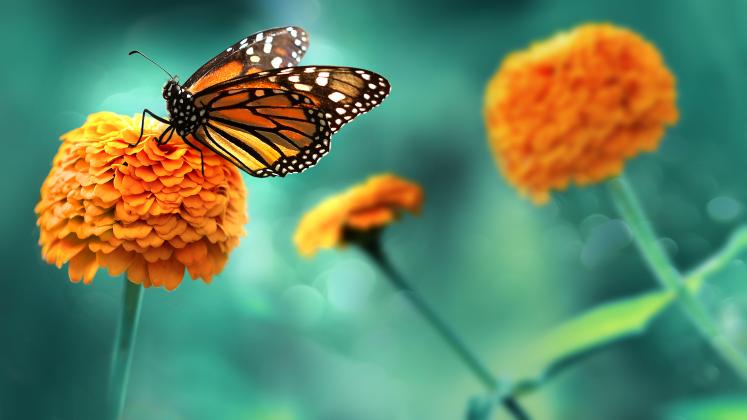Rachael Brooke - Phillips-Rooks District Extension Agent, Agriculture and Natural Resources
Butterfly gardening continues to grow in popularity. With the lengthy list of pollinator plants, knowing what species butterflies prefer can facilitate gardeners with their selections. Group similar species of annuals together to create a planting more likely to attract butterflies. Including a mix of annuals with varying bloom times can lengthen the butterfly season. Some annuals known to attract butterflies include ageratum, cosmos, French marigold, petunia, verbena and zinnia.
Early blooming perennials/shrubs that attract butterflies include allium, chives, forget-me-not and lilac. Bee balm, butterfly bush, black-eyed Susan, buttonbush, butterfly weed, daisy, daylily, gaillardia, lavender, lily, mint, phlox, privet, sunflower and veronica are all good options for a mid-season bloom. Aster, glossy abelia and sedum are late bloomers that attract butterflies.
Other features you can incorporate in the garden to appeal to butterflies include areas of full sun. Butterflies are cold-blooded so they seek sunshine for warmth. Shade is also necessary so they can escape from the intense sun. Water is important for butterflies. This can be provided with a simple bird bath or even a water-filled saucer placed on the ground.
Visit Monarch Watch (www.monarchwatch.org) to find resources for attracting monarch butterflies to your landscape. This organization provides educational material about all things Monarch butterflies, as well as supplies to become an official Monarch waystation. This is a great resource for schools, environmentally focused organizations and even home gardeners.
For more information, please contact the local K-State Research and Extension Office.
K-State Research and Extension is an equal opportunity provider and employer.

